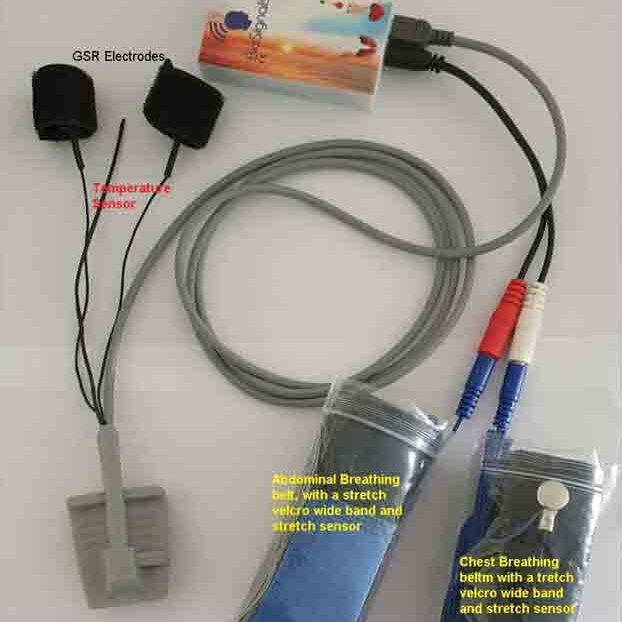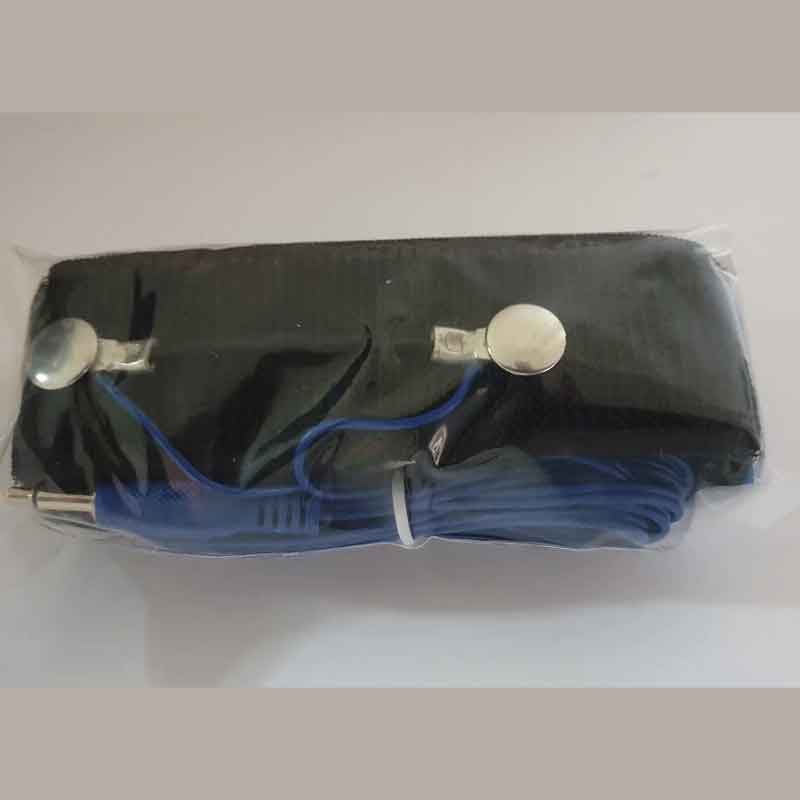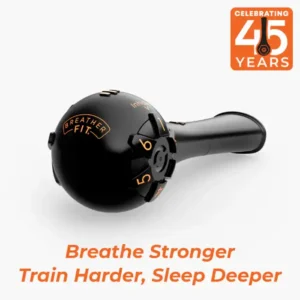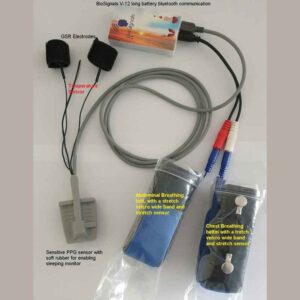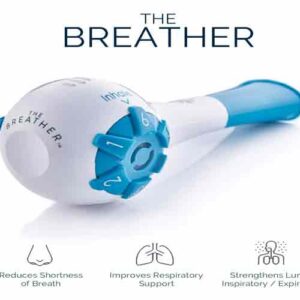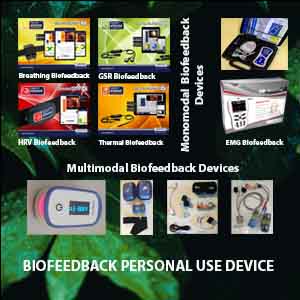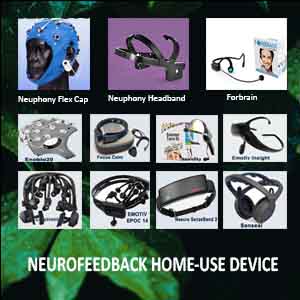Biofeedback Breathing Device at Home
For centuries, cultures have celebrated the power of breath for healing through practices like prayer, meditation, martial arts, and yoga. Today, that ancient wisdom meets modern science in the form of biofeedback breathing devices, transforming how we understand and harness our respiratory system. These lung exercise devices—also known as breathing trainers—use sensors and real-time feedback to guide users toward healthier diaphragmatic breathing. Consequently, medical research in the past 20 years has seen a surge in studies exploring the therapeutic potential of breathing training for various conditions.
Moreover, a growing range of home-use biofeedback breathing devices now empowers individuals to perform targeted breathing exercises in the comfort of their own space, promoting better lung function, reducing stress, and helping manage chronic conditions, all while maintaining complete control over their well-being.
Table of Contents
Toggle- Biofeedback Breathing Device at Home
- The Power of The 2-Minute Biofeedback Breath That Calms Instantly
- Breathing Biofeedback with the BioSignals 5 Sensor Device
- The Breather – Biofeedback Breathing Device
- FAQ:- Biofeedback Breathing Device at Home
- Breathing Biofeedback Device
- Breather Fit: Athletes’ Secret Weapon
- BioSignals 5 Biofeedback Sensors Device
- The Breather Device
The Power of The 2-Minute Biofeedback Breath That Calms Instantly
Our breathing reflects our state of mind. When we feel pleased or tense, we tend to breathe quickly, irregularly, and shallowly, showing both positive and negative stress. However, when we feel relaxed, calm, or sleepy, our breathing becomes slow, steady, and deep.
Breathing has a special role in biofeedback in that we can consciously control this parameter. In everyday life, we rarely think of our breathing and breathe almost exclusively unconsciously. Chronic stress, pain, or other psychological or physical pressures can disrupt our unconscious breathing patterns, often leading to discomfort and prolonged stress. With breathing training, you can train and improve your breathing, achieve deep relaxation, and significantly increase your general well-being. Breathing, therefore, plays an important role in almost all relaxation techniques, such as autogenic training, yoga, meditation, and progressive muscle relaxation.
There are two main measurements of respiration: the respiration amplitude (RA) and the breathing frequency, breaths per minute. Respiration is special because, in contrast to other biofeedback parameters, it can be controlled consciously. This means that breathing biofeedback training is especially suited for beginners.
What are the benefits of diaphragmatic breathing?
Diaphragmatic breathing, providing optimal oxygen saturation of the body, also has several other positive effects on the body:
- It builds stress resilience,
- Rapid fatigue disappears, and exercise tolerance increases,
- Concentration, memory, and mental activity improve,
- Biofeedback-assisted diaphragmatic breathing and systematic relaxation effectively reduce migraines and provide significantly better long-term prophylactic effects than medications. According to some research data, 67% of patients showed a significant clinical response with biofeedback, compared to 64% with propranolol.
- Cleansing the lungs increases their volume, improves lung function, and eliminates shortness of breath. As a result, this process provides therapeutic benefits for respiratory disorders like asthma and respiratory allergies.
- Blood supply to the myocardium improves, significantly reducing the strength and frequency of angina pectoris and hypertensive crises in patients with coronary disease or hypertension while also enhancing hemodynamics.
- The function of the abdominal organs improves the gastrointestinal tract, pancreas, gall bladder, and bile ducts, kidneys (constipation, pain, flatulence, irritable bowel syndrome, etc.),
- Hormonal balance and metabolism normalize, providing maintaining of average weight.
Diaphragmatic breathing activates the parasympathetic nervous system, promoting relaxation, and is a very effective therapeutic tool for panic attacks, anxiety, problems falling asleep, bruxism and TMJD, logoneurosis, asthma, etc.
How do you develop diaphragmatic breathing?
It is impossible to observe the correct breathing technique constantly. However, if a person develops and consolidates the habit of using the proper breathing technique, it will remain for life.
Breathing Biofeedback with the BioSignals 5 Sensor Device
Overview of the Lung Exercise Device
The BioSignals 5 Sensor system is a versatile biofeedback unit designed for monitoring multiple physiological signals simultaneously. It includes the following components relevant to breathing training:
- Chest (thoracic) belt – elastic band worn around the upper torso.
- Abdominal belt – a highly sensitive stretch sensor worn around the abdomen.
- Both belts attach to the main unit (via cable or Bluetooth), feeding data into the PC or mobile app.
These two belts capture real-time expansion and contraction patterns, enabling detailed respiratory analysis.
What It Measures
- Thoracic and abdominal movement: The stretch sensors detect changes in belt tension corresponding to inhalations and exhalations.
- Respiratory rate: Number of breaths per minute.
- Breathing amplitude: The depth of each breath—how much the chest or abdomen expands.
- Timing patterns & biofeedback metrics: The lung exercise device supports extraction of respiratory cycles, relative amplitudes, and spectral features (e.g., inhalation/exhalation duration)
By contrasting chest vs. abdominal expansion, users can monitor breathing patterns, such as thoracic (shallow) vs. diaphragmatic (deep abdominal) breathing.
Setup and Signal Capture
Apply the belts:
- Place the chest belt just below the clavicles to track thoracic motion.
- Position the abdominal belt around the navel area.
Both are elastic and adjustable to fit different body types comfortably.
Connect to the software:
- Use USB or Bluetooth (BLE) to link to PC software or a mobile app.
- Software displays live waveforms of each sensor channel.
Calibrate:
- In-app calibration formats raw values into relative percentages (–100% to +100%) based on belt expansion.
Using Breathing Biofeedback
- Real-time visual feedback: Users view simultaneous thoracic and abdominal waveforms. The goal is to shift breathing amplitude from the chest belt to the abdominal belt, signaling proper diaphragmatic breathing.
- Guided breathing exercises:
- Inhale and feel abdominal expansion; exhale and feel it release.
- Software may guide paced breathing (e.g., 5–6 breaths per minute) while tracking effort.
- Performance targets:
- Set thresholds for abdominal belt movement. Audible/visual cues reinforce once these targets are hit.
- Train gradual increases in abdominal amplitude and smoother breathing cycles.
Promoting Diaphragmatic Breathing
- Balanced waves: The abdominal belt should show a larger amplitude than the chest belt, indicating diaphragmatic dominance.
- Encourage depth and slow pace: Aim for deeper breaths (20–50% of belt expansion) at slower rhythms (e.g., 4–6 breaths/min).
- Compare breathing zones: Seeing chest activity decrease while abdominal activity increases strengthens mind-body awareness.
- Track improvement over time:
- Export data (CSV) for analysis of respiratory rate, amplitude, and chest/abdominal ratios.
- A graphical history of sessions builds motivation and insight into physiological changes.
The BioSignals 5 Sensor device, with its precise chest and abdominal stretch belts, provides immediate visual feedback on breathing patterns. Initially, users begin with shallow, chest‑dominant breathing; subsequently, through guided biofeedback and consistent monitoring, they gradually shift to deeper, slower diaphragmatic breathing. Consequently, they develop more efficient and calming respiratory patterns. This not only enhances stress resilience and relaxation but also empowers users to internalize healthier breathing habits through quantifiable progress tracking.
The Breather - Biofeedback Breathing Device
The Breather – Biofeedback Breathing Device or lung exercise device is a Hand-Held Inspiratory/Expiratory Muscle Trainer for Drug-Free Respiratory Therapy.
- THE ONLY RMT DEVICE FEATURING INDEPENDENT INSPIRATORY/EXPIRATORY DIAL CONTROL.
The Breather functions as both an inspiratory and an expiratory muscle trainer, with adjustable dials for independent resistance settings for inhalation and exhalation. It is the breathing trainer – the ultimate device for respiratory care. Think of it as a lung trainer, supporting respiratory health and efficiency by promoting diaphragmatic (belly) breathing. - DESIGNED TO HELP IMPROVE OXYGEN FLOW.
This lung exercise device benefits those undergoing respiratory treatment. The Breather is a respiratory trainer or exerciser that improves lung strength and capacity by increasing oxygen uptake to vital organs. - DRUG-FREE THERAPY FOR COPD, CHF, AND DYSPHAGIA
Initially, individuals with COPD, CHF, dysphagia, or neuromuscular diseases begin using the Breather device. Subsequently, continued use leads to notable improvements in several key areas—namely, reduced dyspnea, increased peak cough flow, enhanced laryngeal function, and higher quality of life. Moreover, long-term application supports both weaning from ventilation and better speech and swallowing performance. - ONLINE VIDEOS AND A DEDICATED MOBILE APP.
The Breather’s creator, PN Medical offers self-paced, online video protocol training for therapists, patients, and consumers. Additionally, the Breather Coach mobile app lets you track and monitor your progress from your phone. - There are five expiratory and six inspiratory adjustable independent pressure settings. You can adjust the resistance on each inhalation and exhalation. The higher the setting, the higher the resistance.
CLINICAL BENEFITS
The Breather exercise optimizes the blood flow to your working muscles, increasing your performance capacity and extending your exercise limits. It improves the strength of your diaphragm and other respiratory muscles while maximizing lung function. The exercise strengthens your cardiac system and circulation, reducing blood pressure and improving sleep.
To improve sports performance, the Breather Fit is an excellent option.
FAQ:- Biofeedback Breathing Device at Home
A breathing biofeedback device is the breathing trainer that helps you monitor and adjust your breathing patterns, such as depth, rate, and rhythm—typically via a chest or abdominal belt—providing real-time feedback via an app for better breathing habits.
The belt measures the expansion and contraction of your torso as you breathe. That data is sent to a smartphone or tablet app, which visualizes your breath in real time to guide and improve your respiratory control.
This practice can help reduce stress and anxiety, enhance lung capacity, improve focus, and support overall performance by reinforcing deeper, more controlled breathing patterns.
It’s useful for people aiming to boost health and performance (e.g., athletes, musicians), those managing stress or respiratory conditions, or anyone wanting to learn healthier breathing habits.
Most protocols recommend daily short sessions—often around 10 minutes each—to gradually build better respiratory habits, though exact guidance depends on the app’s recommended training plans.
The accompanying apps log session data—breath rate, consistency, depth, and trends—letting you see improvements in breathing awareness and technique across days and weeks.
Yes—evidence shows that breathing biofeedback can support conditions such as anxiety, asthma, COPD, and stress-related disorders by promoting better-controlled breathing patterns.


